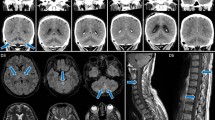Abstract
Immunocompromised patients have been shown to suffer from prolonged viral infections often without detectable immune response. Here chronic infections with low virus levels can be frequently observed. In these patients viral DNA can be detected over long periods by polymerase chain reaction (PCR). In this study parvovirus B19 presence was assessed by PCR, immunoblot and enzyme-linked immunosorbent assay in sera from children with mainly oncological and hematological diseases. In 45% of sera B19 DNA was observed. Of the children 25% had IgG antibodies to viral protein 1 and 2 (VP1/2) and 15% to nonstructural protein 1 (NS1). In 6% of children IgM antibodies to VP1/2 were detected. These results indicate that the number of children with immune response to B19 proteins is distinctly lower than the number of children with B19 DNA. Transfusions of blood products might have been a possible route for B19 infection. Establishment and maintenance of a persistent parvovirus B19 infection with or without immune response are enhanced in the analyzed immunocompromised children in comparison with immunocompetent children. A persistence of B19 DNA was demonstrated up to 10 months in patients sera.
Similar content being viewed by others
Author information
Authors and Affiliations
Additional information
Received: 22 September 1997
Rights and permissions
About this article
Cite this article
Flunker, G., Peters, A., Wiersbitzky, S. et al. Persistent parvovirus B19 infections in immunocompromised children. Med Microbiol Immunol 186, 189–194 (1998). https://doi.org/10.1007/s004300050063
Issue Date:
DOI: https://doi.org/10.1007/s004300050063




